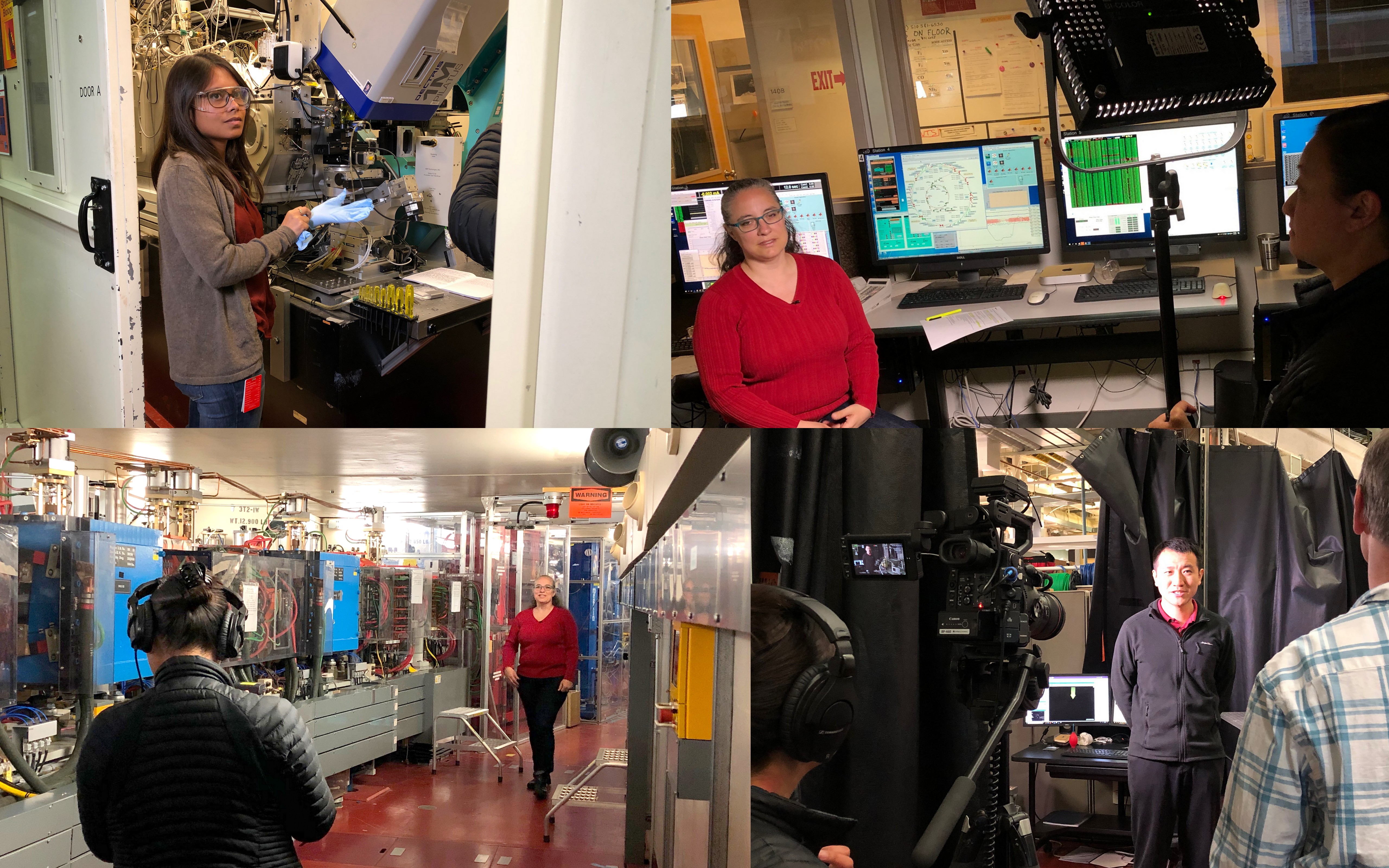In recognition of the International Day of Light (@IDL2019) on May 16, the Department of Energy’s Lawrence Berkeley National Laboratory (Berkeley Lab) is highlighting how scientists use light in laboratory experiments.
From nanolasers and X-ray beams to artificial photosynthesis and optical electronics, Berkeley Lab researchers tap into light’s many properties to drive a range of innovative R&D.
In the three videos displayed below, you will learn how light drives the science of Berkeley Lab’s Advanced Light Source (ALS), a synchrotron that produces many forms of light beams. These light beams are customized to perform a variety of experimental techniques for dozens of simultaneous experiments conducted by researchers from across the nation and around the world.
Join our “A Day in the Light” celebration: Share and view videos, photos, and other posts about the convergence of science and light at #adayinthelight.
The following are Berkeley Lab’s #adayinthelight videos:
Angelic Lucero, Accelerator and Floor Operator at the ALS, explains the process of turning on the light that drives experiments at the ALS. (Credit: Marilyn Chung/Berkeley Lab)
Ziheng Yao, ALS Doctoral Fellow in Residence and a Ph.D. student at Stony Brook University in New York, shares how he uses infrared light at the ALS to study a range of samples, including battery and biological materials, meteors, and more. (Credit: Marilyn Chung/Berkeley Lab)
Shambhavi Pratap, ALS Doctoral Fellow in Residence and a Ph.D. student at the Technical University of Munich, discusses how she studies thin-film solar energy materials using X-rays at the ALS. (Credit: Marilyn Chung/Berkeley Lab)
The Advanced Light Source is a DOE Office of Science User Facility. The International Day of Light is recognized by the United Nations Educational, Scientific and Cultural Organization (UNESCO).
More
Join the celebration of light and share your own light-driven science:
Learn about the International Day of Light:
The Advanced Light Source is a DOE Office of Science User Facility.
###
Founded in 1931 on the belief that the biggest scientific challenges are best addressed by teams, Lawrence Berkeley National Laboratory and its scientists have been recognized with 13 Nobel Prizes. Today, Berkeley Lab researchers develop sustainable energy and environmental solutions, create useful new materials, advance the frontiers of computing, and probe the mysteries of life, matter, and the universe. Scientists from around the world rely on the Lab’s facilities for their own discovery science. Berkeley Lab is a multiprogram national laboratory, managed by the University of California for the U.S. Department of Energy’s Office of Science.
DOE’s Office of Science is the single largest supporter of basic research in the physical sciences in the United States, and is working to address some of the most pressing challenges of our time. For more information, please visit science.energy.gov.
